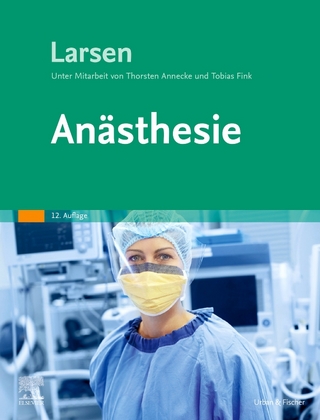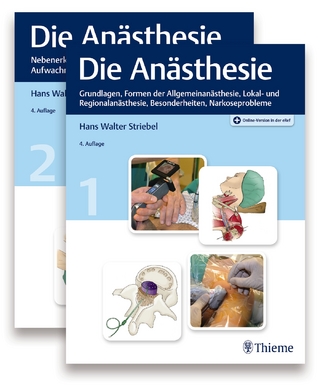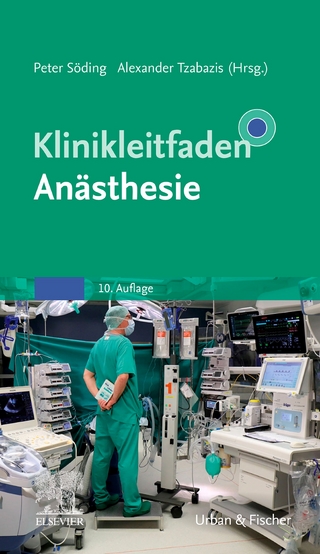
Obstetric Decision-Making and Simulation
Cambridge University Press (Verlag)
978-1-108-29677-9 (ISBN)
Simulation is becoming an integral part of medical education and has already a well-established role within anaesthesia training, with many examination questions already modelled on simulation scenarios. The clinical diversity and multidisciplinary nature of an obstetric team creates the ideal environment for simulation training. It enables the team to develop their knowledge of clinical emergencies whilst becoming more aware of the importance of human factors. This book is a practical guide to inspire clinical leads to establish simulation within their delivery suite. The book comprises an extensive obstetric scenario library, with each scenario broken down into learning outcomes, a list of staff and equipment needed, specific stages mapped to learning outcomes with appropriate results/investigations and a checklist of ideal actions to enable the post-scenario debrief. Written by consultant obstetric anaesthetists, this book will appeal to medical practitioners interested in facilitating obstetric simulation.
Kirsty Maclennan is a consultant in general and obstetric anaesthesia. She is Associate Director of Medical Education and Simulation Faculty Chair at Manchester Foundation Trust and is Training Programme Director for Core Anaesthesia Manchester South. Her previous written works include Core Topics in Obstetric Anaesthesia (Cambridge, 2015). Catherine Robinson is a general and obstetric anaesthetist. She is very active in medical education, training all members of the multidisciplinary obstetric team including midwives, critical care nurses, obstetricians and anaesthetists. She is a human factor and simulation enthusiast, who promotes and facilitates simulation training.
List of Contributors; Foreword; Part I. The Role of Simulation: 1. Setting the scene for simulation-based education Debra Nestel, Kristen Moloney and Simon Hyde; 2. The where of simulation training Al May; 3. Interprofessional in-situ simulation Jonathan Hurst; 4. Debriefing and the debrief Mark Murphy and Annemarie Brown; 5. Fidelity in obstetric simulation Shane O'Sullivan and Owen O'Sullivan; Part II. The Impact of Human Factors in Clinical Practice: 6. Introduction to human factors and ergonomics in obstetric simulation Mark Hellaby; 7. Situational awareness, bias and decision making styles in obstetric simulation Ian Parkinson and Andrew F. Smith; 8. Team-working, communication and use of communication aids and checklists in an emergency Simon Mercer; Part III. Clinical Scenarios: 9. Introduction to the scenarios Kirsty Maclennan; Scenario Section 1: Obstetric; 10. Uterine inversion Samantha Bonner; 11. Shoulder dystocia following forceps delivery for fetal bradycardia Samantha Cox and Samiksha Patel; 12. Umbilical cord prolapse Michelle McIntosh; 13. Minimising decision to delivery interval (DDI) in a category 1 caesarean section – pre-theatre phase Cliff Shelton and Sophie Bishop; Scenario Section 2: Maternal collapse; 14. Amniotic fluid embolism Kim Macleod and Yara Mohammed; 15. Anaphylaxis in labour Andrew Parkes and Shuayb Elkhalifa; 16. Acute pulmonary embolism in pregnancy Louise Simcox and David Simcox; Scenario Section 3: Haemorrhage; 17. Antepartum haemorrhage and perimortem caesarean section Kenneth Ma; 18. Vasa praevia Shimma Rehman; 19. Postpartum haemorrhage Pavan Kochhar and Stuart Knowles; Scenario Section 4: Sepsis; 20. Group A streptococcal puerperal sepsis Laura Coleman and Melissa Whitworth; 21. Pneumonia and respiratory failure in a pregnant woman James Hanison and Dougal Atkinson; Scenario Section 5: Hypertensive disorders of pregnancy; 22. Eclampsia Stephanie Worton, Emma Shawkat and Jenny Myers; 23. HELLP syndrome with fetal compromise requiring an emergency GA caesarean section Emma Shawkat, Stephanie Worton and Jenny Myers; 24. Microangiopathic haemolytic anaemia (MAHA) in pregnancy presenting in A&E Louise Simcox and Jo Gillham; Scenario Section 6: Cardiac; 25. Chest pain in a pregnant patient Shahid Karim and Sarah Vause; 26. Peripartum cardiomyopathy Omar Asghar and Sarah Vause; 27. Complete heart block in a pregnant patient Anita Macnab and Kirsty Maclennan; 28. Cardioversion in a pregnant patient with corrected tetralogy of fallot Kailash Bhatia; Scenario Section 7: General anaesthesia; 29. General anaesthesia and failed intubation in a category 1 caesarean section Richard McGuire and Sharon Smith; Scenario Section 8: Neuraxial analgesia; 30. Subdural block in labour Kathryn A. Wood and Lorna A. Howie; 31. Total spinal anaesthesia in labour K. E. Gott and Sophie Kimber-Craig; 32. Severe local anaesthetic toxicity in labour Charlotte Ash and Suna Monaghan; Scenario Section 9: Non-neuraxial analgesia; 33. Respiratory arrest in a woman using remifentanil PCA for labour Michael McGinlay and Susan Davies; Scenario Section 10: Endocrine; 34. Diabetic ketoacidosis in pregnancy Samantha Bonner and Jonathan Schofield; Scenario Section 11: Neurological; 35. Subarachnoid haemorrhage in the post partum patient Craig Carroll and Daniel Holsgrove; Scenario Section 12: Trauma; 36. Obstetric trauma John Butler; Scenario Section 13: Neonatal; 37. Newborn life support (preterm delivery) in obstetric anaesthesia Jonathan Hurst; Index.
| Erscheinungsdatum | 09.04.2019 |
|---|---|
| Zusatzinfo | Worked examples or Exercises; 54 Tables, black and white; 5 Halftones, black and white; 9 Line drawings, black and white |
| Verlagsort | Cambridge |
| Sprache | englisch |
| Maße | 190 x 246 mm |
| Gewicht | 740 g |
| Themenwelt | Medizin / Pharmazie ► Medizinische Fachgebiete ► Anästhesie |
| Medizin / Pharmazie ► Medizinische Fachgebiete ► Gynäkologie / Geburtshilfe | |
| ISBN-10 | 1-108-29677-7 / 1108296777 |
| ISBN-13 | 978-1-108-29677-9 / 9781108296779 |
| Zustand | Neuware |
| Haben Sie eine Frage zum Produkt? |
aus dem Bereich


